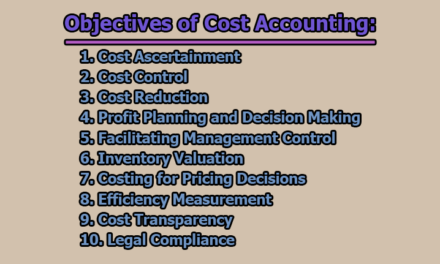Key Differences Between Petty Cash and Cash Float:
Petty cash and cash float are both forms of maintaining a small amount of cash on hand to facilitate day-to-day business operations. While they serve similar purposes, there are key differences between the two. Understanding these distinctions is crucial for effective cash management within an organization. Here are some of the key differences between petty cash and cash float.
| Criteria | Petty Cash | Cash Float |
| Definition | A small, fixed amount of cash kept on hand for specific, minor expenses such as office supplies, postage, or employee reimbursements. | The total amount of money set aside for daily, miscellaneous expenses, covering a broader range of needs. |
| Purpose | Intended for specific, predefined purposes with strict guidelines on usage. | Available for any small, unplanned expenses that arise during daily operations, offering more flexibility in spending. |
| Control | Typically under strict control and supervision, with designated custodians responsible for managing and disbursing funds. | Relatively more flexible, but still monitored to prevent misuse. Oversight may be distributed across multiple individuals or departments. |
| Funding | A fixed amount that is replenished periodically based on the actual usage and submission of receipts. | A fluctuating amount adjusted as needed, with periodic reviews to determine the appropriate level of funds required. |
| Documentation | Requires detailed records and receipts for every transaction, fostering accountability and transparency. | Documentation is still necessary but may be less rigid, allowing for a more streamlined process for smaller, routine transactions. |
| Accountability | Usually assigned to a specific individual or department, promoting individual responsibility and tracking of expenses. | Shared among multiple individuals or departments, fostering a collaborative approach to managing daily expenditures. |
| Replenishment Process | Requires a formal request for replenishment, often accompanied by a review of receipts and documentation. | Can be replenished more informally as needed, with periodic assessments to adjust the fund amount based on changing requirements. |
| Scope | Limited to specific, predetermined expenses, preventing the misuse of funds for purposes other than those designated. | More broad in scope, covering various daily expenses without strict limitations, allowing for a wider range of usability. |
| Flexibility | Less flexible due to specific allocation of funds, ensuring that the money is used only for its intended purposes. | More flexible, as it can be used for various purposes, providing adaptability to meet the diverse needs of daily operations. |
| Monitoring | Regularly audited to ensure compliance with established guidelines and to identify any discrepancies in fund usage. | Monitored but with a slightly more lenient approach, focusing on maintaining control while allowing for the necessary adaptability in spending. |
In conclusion, both petty cash and cash float are essential components of maintaining liquidity for daily business operations. While petty cash is more structured and designated for specific purposes, cash float offers greater flexibility. The key lies in striking the right balance and adopting the approach that best suits the organization’s operational needs and financial control requirements. Proper documentation, accountability, and regular monitoring are crucial elements regardless of the chosen method, ensuring effective cash management and financial transparency within the organization.

Assistant Teacher at Zinzira Pir Mohammad Pilot School and College










